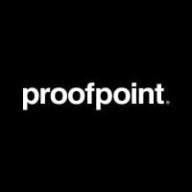

IBM Security QRadar and Proofpoint Insider Threat Management compete in the cybersecurity market, with IBM Security QRadar being praised for its comprehensive threat detection and analytics, while Proofpoint Insider Threat Management stands out for its insider threat prevention. Customers often prefer IBM Security QRadar due to its pricing and support.
Features: IBM Security QRadar offers advanced threat intelligence, powerful analytics, and seamless integration capabilities, making it ideal for enterprise-level threat management. Proofpoint Insider Threat Management excels in preventing data leaks, providing detailed policy enforcement, and real-time detection of insider threats.
Room for Improvement: IBM Security QRadar could enhance user-friendliness beyond its UI to allow easier integration with third-party systems, improve scalability for global deployments, and simplify customization of correlation rules. Proofpoint Insider Threat Management might improve in areas such as offering more out-of-the-box integrations, enhancing its machine learning algorithms for threat prediction, and providing more detailed reporting options for various user levels.
Ease of Deployment and Customer Service: IBM Security QRadar is recognized for its scalable deployment options and comprehensive support resources suitable for large organizations. Proofpoint Insider Threat Management offers a streamlined deployment experience with efficient customer support, appealing to organizations with limited IT resources.
Pricing and ROI: IBM Security QRadar generally requires a significant upfront investment but provides a longer-term ROI, ideal for organizations seeking comprehensive security solutions. Proofpoint Insider Threat Management offers competitive pricing and a quicker ROI, particularly for companies focusing on insider threat management strategies.
| Product | Market Share (%) |
|---|---|
| IBM Security QRadar | 9.0% |
| Proofpoint Insider Threat Management | 5.6% |
| Other | 85.4% |

| Company Size | Count |
|---|---|
| Small Business | 89 |
| Midsize Enterprise | 36 |
| Large Enterprise | 102 |
IBM Security QRadar (recently acquired by Palo Alto Networks) is a security and analytics platform designed to defend against threats and scale security operations. This is done through integrated visibility, investigation, detection, and response. QRadar empowers security groups with actionable insights into high-priority threats by providing visibility into enterprise security data. Through centralized visibility, security teams and analysts can determine their security stance, which areas pose a potential threat, and which areas are critical. This will help streamline workflows by eliminating the need to pivot between tools.
IBM Security QRadar is built to address a wide range of security issues and can be easily scaled with minimal customization effort required. As data is ingested, QRadar administers automated, real-time security intelligence to swiftly and precisely discover and prioritize threats. The platform will issue alerts with actionable, rich context into developing threats. Security teams and analysts can then rapidly respond to minimize the attackers' strike. The solution will provide a complete view of activity in both cloud-based and on-premise environments as a large amount of data is ingested throughout the enterprise. Additionally, QRadar’s anomaly detection intelligence enables security teams to identify any user behavior changes that could be indicators of potential threats.
IBM QRadar Log Manager
To better help organizations protect themselves against potential security threats, attacks, and breaches, IBM QRadar Log Manager gathers, analyzes, preserves, and reports on security log events using QRadar Sense Analytics. All operating systems and applications, servers, devices, and applications are converted into searchable and actionable intelligent data. QRadar Log Manager then helps organizations meet compliance reporting and monitoring requirements, which can be further upgraded to QRadar SIEM for a more superior level of threat protection.
Some of QRadar Log Manager’s key features include:
Reviews from Real Users
IBM Security QRadar is a solution of choice among users because it provides a complete solution for security teams by integrating network analysis, log management, user behavior analytics, threat intelligence, and AI-powered investigations into a single solution. Users particularly like having a single window into their network and its ability to be used for larger enterprises.
Simon T., a cyber security services operations manager at an aerospace/defense firm, notes, "The most valuable thing about QRadar is that you have a single window into your network, SIEM, network flows, and risk management of your assets. If you use Splunk, for instance, then you still need a full packet capture solution, whereas the full packet capture solution is integrated within QRadar. Its application ecosystem makes it very powerful in terms of doing analysis."
A management executive at a security firm says, "What we like about QRadar and the models that IBM has, is it can go from a small-to-medium enterprise to a larger organization, and it gives you the same value."
Proofpoint Insider Threat Management offers comprehensive insights into internal risks, emphasizing detection and response to insider threats effectively.
Proofpoint Insider Threat Management provides a robust platform for identifying, managing, and mitigating internal security threats within organizations. It leverages analytics to monitor user activities and detect anomalies that might signify potential threats. Users benefit from enhanced visibility into internal systems and processes, which strengthens their information security protocols. By focusing on insider threats, it helps organizations safeguard sensitive data and maintain compliance with industry regulations.
What are the key features of Proofpoint Insider Threat Management?
What benefits and ROI come from using Proofpoint Insider Threat Management?
Many industries implement Proofpoint Insider Threat Management to protect sensitive information and comply with regulatory standards. It is particularly beneficial in sectors such as finance and healthcare, where data security is critical. By integrating it with their current infrastructure, organizations can effectively track and manage insider threats, ensuring data is handled securely and responsibly.
We monitor all User Entity Behavior Analytics (UEBA) reviews to prevent fraudulent reviews and keep review quality high. We do not post reviews by company employees or direct competitors. We validate each review for authenticity via cross-reference with LinkedIn, and personal follow-up with the reviewer when necessary.